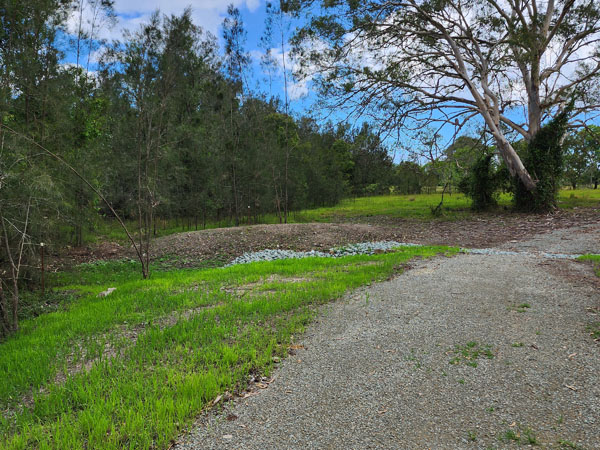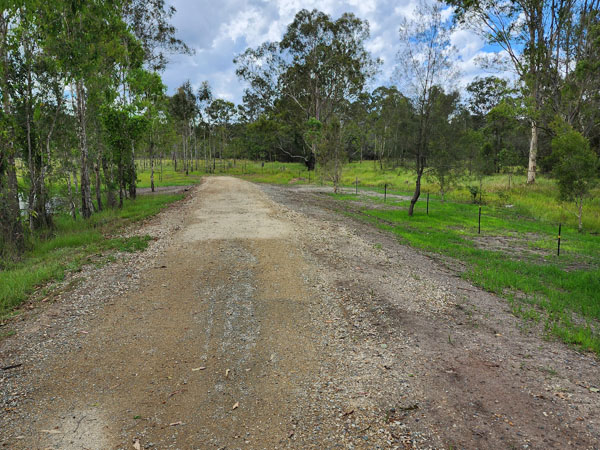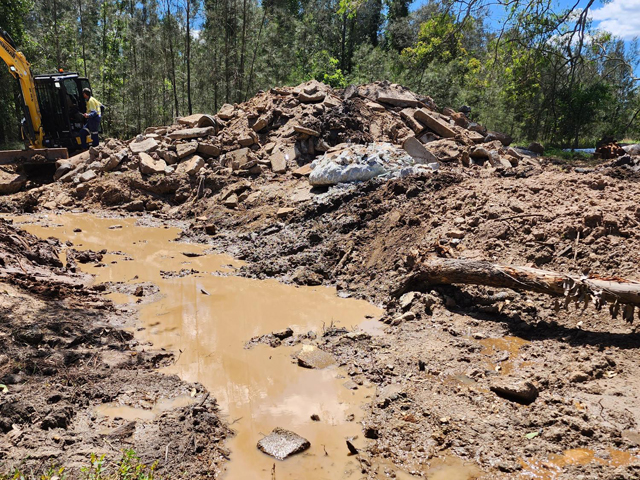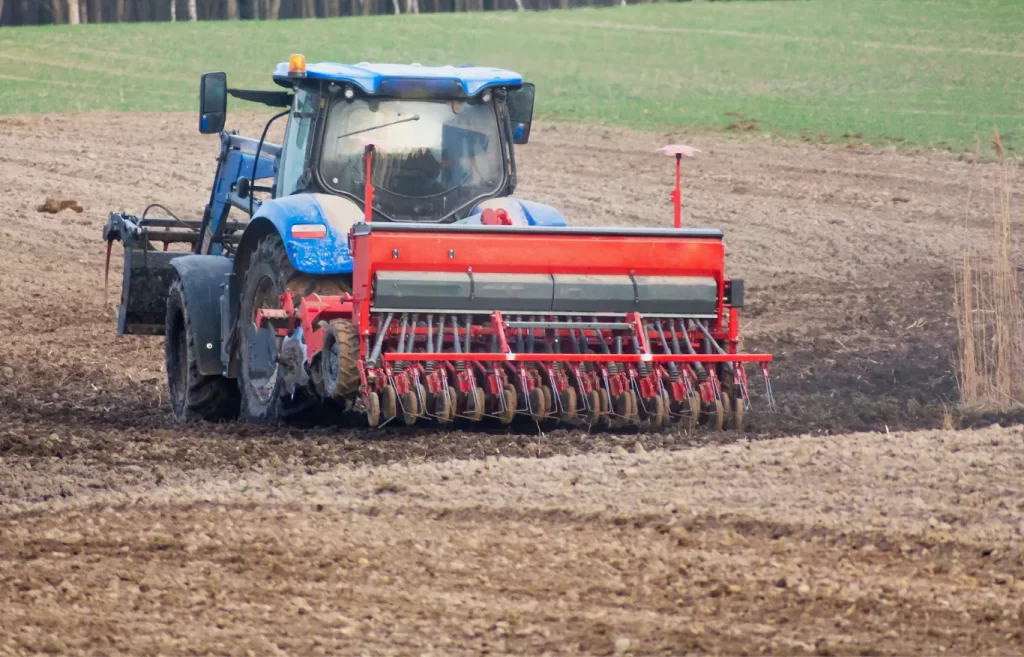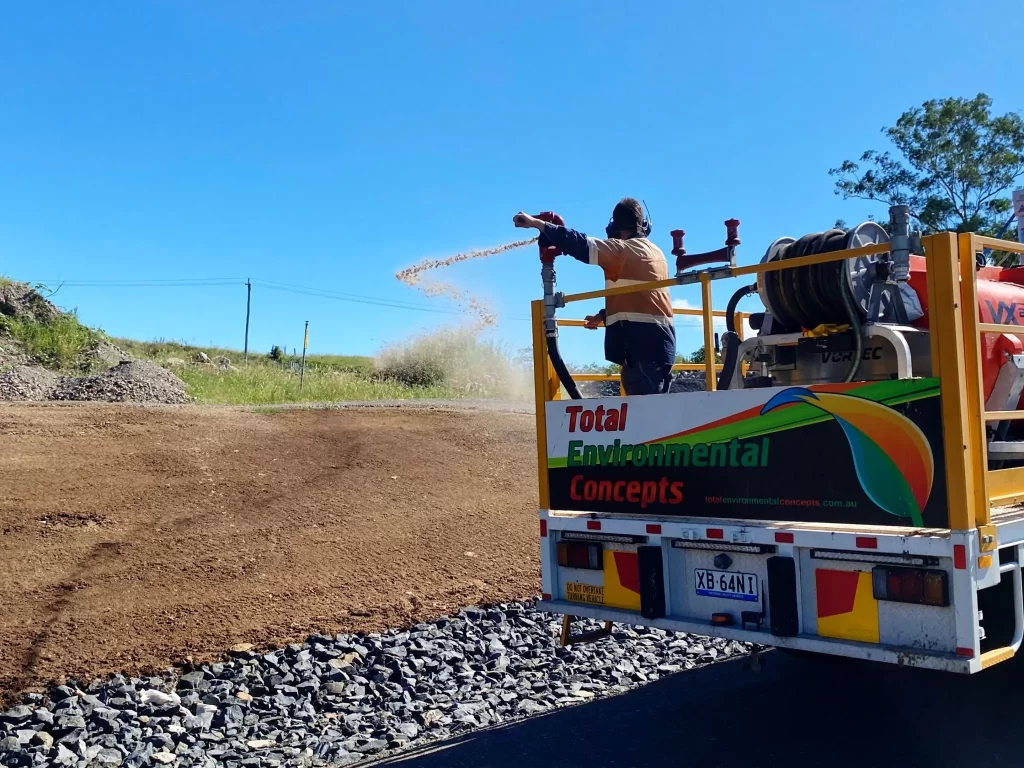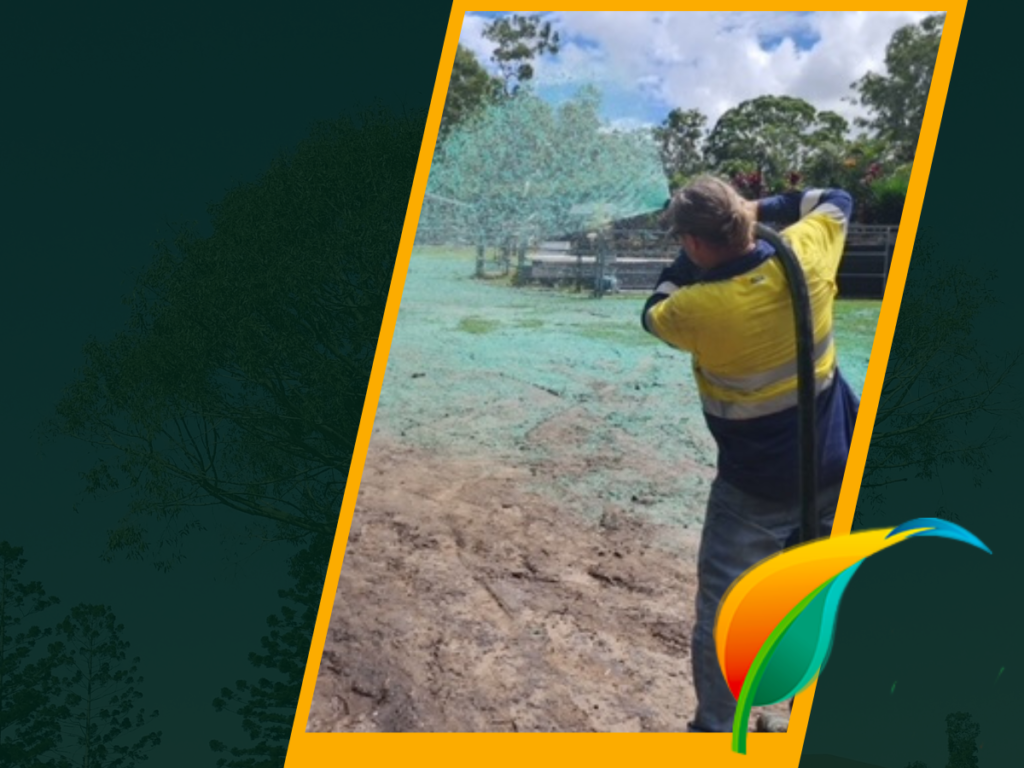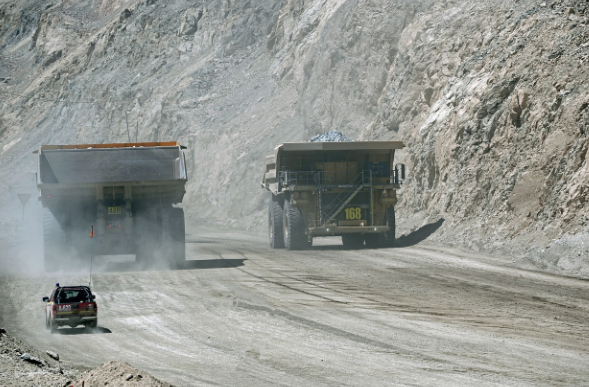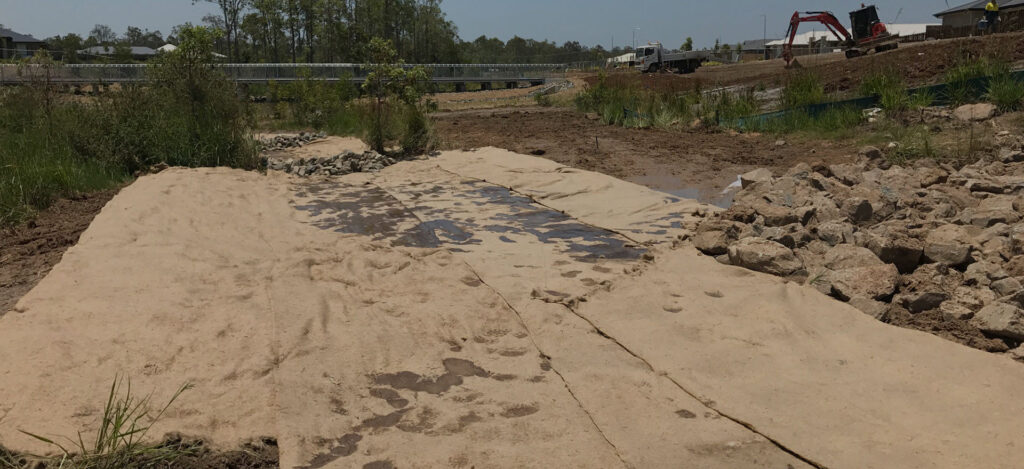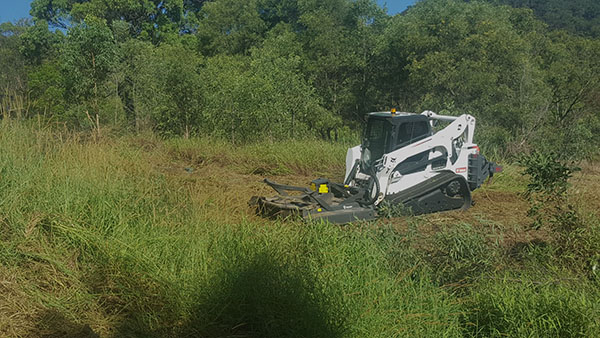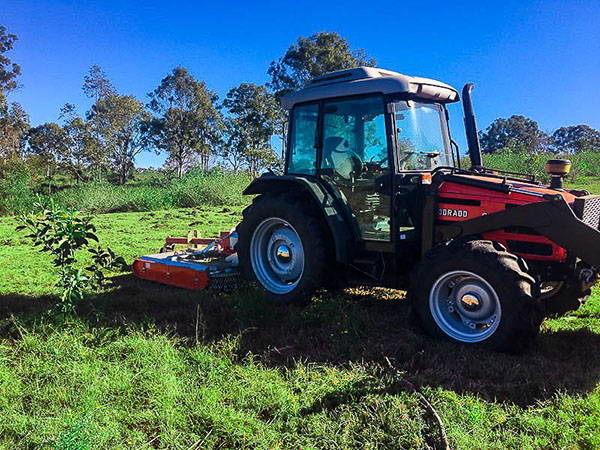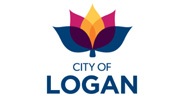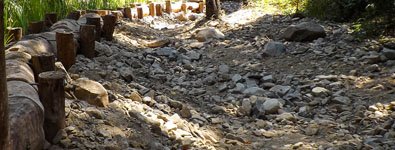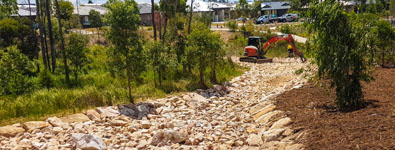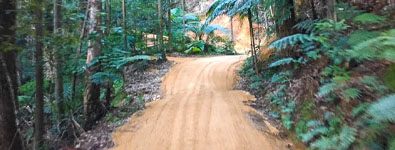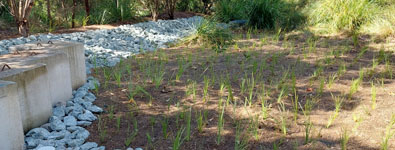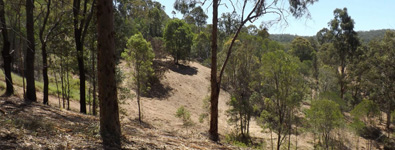Total Environmental Concepts was utilised by the Logan City Council to address a critical issue at the Stoneleigh Dam. The dam wall, situated on the opposite side of the spillway, had been eroded due to an obstruction caused by dumped concrete and other debris. This obstruction forced water to seek its weakest point, resulting in erosion and potential ecological damage. This case study highlights the problem faced, the proactive actions taken by our team, and the successful results achieved through our expertise and dedication.
The Problem:
The Stoneleigh Dam presented a significant challenge due to the erosion of its dam wall caused by an obstructed spillway. The accumulation of dumped concrete and debris obstructed the natural flow of water, leading to erosion at the dam wall’s opposite side. This erosion posed a threat not only to the dam’s structural integrity but also to the surrounding ecosystem. Logan City Council recognised the ecological importance of the dam as a habitat for birdlife and the environment, underscoring the need for a comprehensive repair solution.
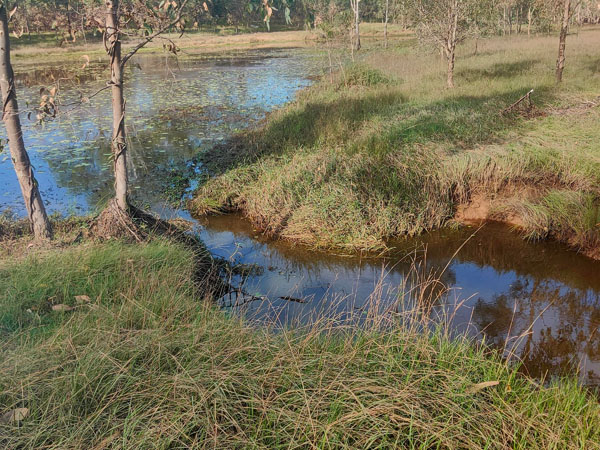
Actions Taken:
Upon assessment of the site, we devised a comprehensive strategy to address the erosion and ecological concerns at Stoneleigh Dam:
Access Track Construction:
Recognising the necessity of an access track for both the repair process and potential future development, we initiated the construction of a durable and reliable access track. Due to the site’s high moisture content, the track construction involved excavating to a depth of around 600mm. Subsequently, layers of 300mm rock were placed on geofabric, followed by the application of road base. This provided a stable and accessible track for the transportation of equipment and materials.
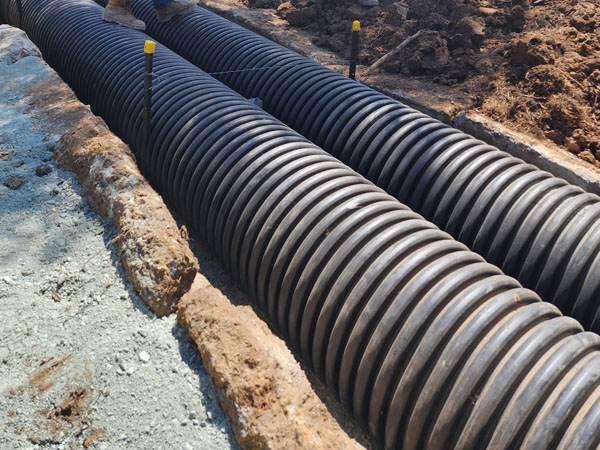
Debris Removal and Pipe Installation:
One of the initial challenges encountered was the substantial amount of dumped concrete, totaling over 600 tonnes, that needed to be removed from the site. Our team efficiently managed the removal process to clear the area. Additionally, to prevent future obstructions, two 600mm diameter pipes were installed in concrete to facilitate proper water flow through the spillway.
Erosion and Compaction:
Addressing the eroded sections of the dam wall, we imported more than 200 tonnes of clay to address the slumping areas. The imported clay was meticulously compacted, top-dressed, and seeded to stabilise the dam wall. This meticulous approach ensured the structural stability of the dam while contributing to the restoration of the ecosystem.
Water Management and Habitat Rescue:
To address the washout area, we managed water extraction, rescuing various aquatic species, including turtles, red claw crayfish, and other native fish, before commencing repair work. Layers of compacted clay were added to the washout area in stages, with approximately 600 tonnes of clay in each layer. This process was repeated until the washout was restored to stability, preserving the aquatic habitat.
Results:
The comprehensive approach undertaken by the Total Environmental Concepts team resulted in a successful resolution of the challenges faced at the Stoneleigh Dam:
Structural Stability: The repaired dam wall and spillway ensured the structural integrity of the Stoneleigh Dam, preventing further erosion and potential breaches.
Ecological Restoration: The careful management of the repair process allowed our team to not only restore the dam’s integrity but also to preserve and enhance its ecological value. The rescued aquatic species were reintroduced to a stable environment, and the restoration efforts contributed to the overall health of the ecosystem.
Future Readiness: The construction of a sturdy access track not only facilitated the repair process but also provided a foundation for potential future development, ensuring sustained access without disturbing the surrounding environment.
By implementing a comprehensive approach that encompassed access track construction, debris removal, erosion management, water extraction, and habitat rescue, Total Environmental Concepts restored the dam’s integrity and ecological value. The project’s success underscored our commitment to environmental preservation, sustainable solutions, and effective project execution.
